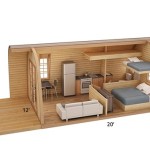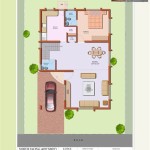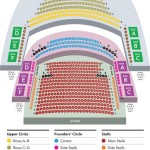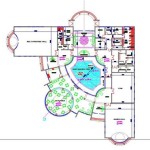House Floor Plans in Australia: A Comprehensive Guide
House floor plans are fundamental blueprints that serve as the foundation for building or renovating a home in Australia. They provide a scaled diagram illustrating the arrangement of rooms, walls, doors, windows, and other features within a structure. Understanding house floor plans is essential for homeowners, builders, architects, and interior designers to facilitate effective communication, streamline construction processes, and ensure the final build aligns with the desired functionality and aesthetic.
In Australia, where diverse lifestyles and environmental conditions influence housing designs, floor plans are particularly crucial. They must cater to the specific needs of the occupants, considering factors such as climate, land size, accessibility, and building codes. This article provides a comprehensive overview of house floor plans in Australia, covering their various types, essential elements, considerations for design, and their role in the overall building process.
Understanding the Different Types of House Floor Plans
House floor plans are not monolithic; they come in various iterations catering to different styles, budgets, and functional requirements. Identifying the most suitable type of floor plan is a critical initial step in any construction or renovation project.
One of the most common types is the open floor plan. Open floor plans minimize the number of interior walls, creating a spacious and interconnected living area. This design promotes natural light flow and enhances social interaction within the home. Open floor plans are popular in modern Australian homes, particularly in smaller properties where maximizing space is a priority. However, they can also present challenges regarding noise control and privacy.
In contrast, closed floor plans feature distinct, separate rooms with clearly defined boundaries. This traditional layout offers greater privacy, sound insulation, and specialized functionalities for individual spaces. Closed floor plans are often preferred in larger homes or households where multiple activities occur simultaneously. While offering greater privacy, they can limit the sense of spaciousness and natural light distribution compared to open floor plans.
A split-level floor plan is characterized by different levels of the house being offset from one another, typically by a half-story. This design is often used on sloping blocks to minimize excavation and create visual interest. Split-level homes can offer distinct zones for living, sleeping, and entertaining, promoting privacy and functionality. However, they can also pose accessibility challenges for individuals with mobility limitations.
Finally, customized floor plans are tailored to the specific requirements of the homeowner and the unique features of the building site. These plans often incorporate bespoke designs, innovative layouts, and specialized features not found in standard floor plan templates. Custom floor plans are ideal for homeowners seeking a truly personalized living space, but they can be more expensive and time-consuming to develop compared to pre-designed plans.
Key Elements to Consider When Choosing a House Floor Plan
Selecting the right floor plan involves careful consideration of several key elements that impact the functionality, liveability, and overall value of the home. These factors include room size, layout, traffic flow, and accessibility.
Room size is a crucial factor, dictating the functionality and comfort of each space. Adequate room size ensures sufficient space for furniture, movement, and activities. In Australia, standard room sizes are often influenced by building codes and energy efficiency requirements. Living rooms and master bedrooms typically require larger dimensions than secondary bedrooms or utility spaces. It is important to consider the intended use of each room and allocate space accordingly.
The layout of the floor plan refers to the arrangement of rooms and their relationship to one another. An effective layout optimizes space utilization, promotes natural light and ventilation, and facilitates easy movement between different areas of the house. The placement of essential areas, such as the kitchen, bathrooms, and laundry, should be carefully considered to ensure convenience and efficiency. Circulation patterns within the house must be intuitive and avoid unnecessary congestion.
Traffic flow refers to the ease with which people can move around the house. A well-designed floor plan minimizes obstructions, avoids bottlenecks, and provides clear pathways between different areas. The placement of doorways, hallways, and staircases should be carefully considered to ensure efficient and comfortable movement. Traffic patterns should also be considered in relation to furniture placement and overall room layout.
Accessibility is another critical consideration, particularly for individuals with mobility limitations or those planning for aging in place. Accessible floor plans incorporate features such as wider doorways, ramps, grab bars, and accessible bathrooms. These features ensure that the home can be easily navigated and used by people of all abilities. Australian building codes mandate certain accessibility requirements for new homes, particularly for entry points and bathrooms.
Beyond these core elements, homeowners should also consider the orientation of the house in relation to the sun, prevailing winds, and neighboring properties. Optimizing the orientation can maximize natural light and ventilation, reduce energy consumption, and enhance privacy.
The Role of Floor Plans in the Building and Renovation Process
Floor plans are not simply design documents; they are integral to the entire building and renovation process, serving as a communication tool, a planning guide, and a legal document.
Firstly, floor plans provide a visual representation of the proposed building or renovation project. This allows homeowners, architects, builders, and other stakeholders to understand the overall design concept and identify any potential issues or conflicts before construction begins. Detailed floor plans facilitate effective communication and collaboration among different parties, ensuring that everyone is on the same page.
Secondly, floor plans serve as a planning guide for the construction process. They provide detailed information about the dimensions, materials, and specifications of each element of the building. This information is used by builders to estimate costs, schedule work, and coordinate different trades. Floor plans also serve as a reference point during construction, ensuring that the building is built according to the approved design.
Thirdly, floor plans are often required as part of the building permit application process in Australia. Local councils use floor plans to assess whether the proposed building or renovation project complies with building codes, planning regulations, and environmental standards. Approved floor plans become a legal document that outlines the scope of the approved work and serves as a basis for inspections during and after construction.
Beyond the initial construction phase, floor plans also play a role in property valuation, insurance, and future renovations. Accurate floor plans provide valuable information to potential buyers, insurers, and subsequent owners. They can also be used as a starting point for planning future renovations or additions to the property.
In the context of sustainable building practices, floor plans contribute to energy efficiency and environmental performance. They allow architects and designers to optimize natural light and ventilation, minimize energy consumption, and incorporate sustainable materials. A well-designed floor plan can significantly reduce the environmental footprint of a home and improve its long-term sustainability.
The advent of digital technology has revolutionized the way floor plans are created and used. Computer-aided design (CAD) software and building information modeling (BIM) tools have enabled architects and designers to create highly detailed and accurate floor plans that can be easily shared and modified. These digital tools also allow for 3D visualizations and virtual tours, providing homeowners with a realistic preview of the finished product. Furthermore, online floor plan services have made it easier for homeowners to find and customize pre-designed floor plans to suit their specific needs.

Eucalypt Granny Flats

Pin On Floor Plans

Home Designs Buy Owner Builder Plans House Floorplans
Serenity House Plan For Narrow 10 Metre Lots Brighton Homes

Floor Plan Friday The Ideal Open Family Home N House Plans One Story
Small Homes Top 5 Floor Plans Designs For Houses Architecture Design
House Plans The Top Designs For Aussies Enviro Friendly

Design Catalogue Silkwood Homes

Floor Plans Custom Home Builders Melbourne Victoria I A1a Homes

Redcliffe And Brisbane House Floor Plans Drawings Banksia Images








